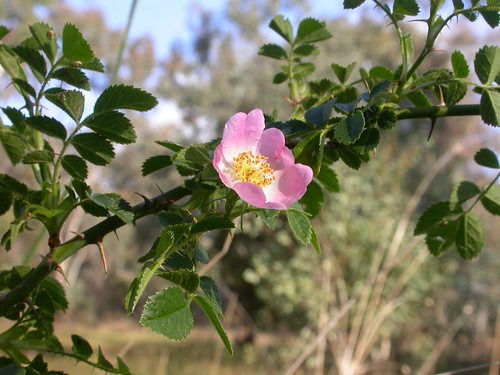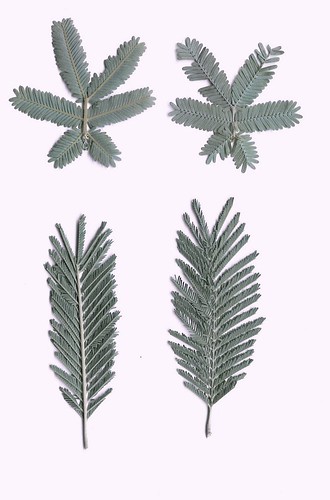Join us for a Pre-Christmas working party to hunt woody weeds at the northwest slope of Mount Majura.
When: Sunday, 18 December 2011, 9.00 am – 12.00 noon
Where: Mt Majura nature park off Antill Street south of “The Fair” construction site, north Watson
Meet: Access and car parking opposite Prime TV; walk along the horse track towards “The Fair” until you hit the PCS trailer; click here to view a map.
What: Cut-&-daub Sweet Briar, hawthorns, and other woody weeds and frilling of Cootamundra wattles.
Bring: Sun protection, appropriate shoes, body-covering clothing; tools and morning tea will be provided.
Novice weeders, please come early for an introduction.
Enquiries: Email admin@majura.org or Phone 6247 7515
To view common woody weeds of Mount Majura including the target weeds of the working party click on the FoMM Woody Weeds Flickr Group. Some of the weeds we will tackle are featured below.
 Firethorn, Pyracantha sp. flowering at the lower slope of Mount Majura (Photograph Waltraud Pix, 15.11.2011).
Firethorn, Pyracantha sp. flowering at the lower slope of Mount Majura (Photograph Waltraud Pix, 15.11.2011).
Firethorns are native to Asia and have been introduced to Australia as an ornamental plant. There are a number of species but the most common is the Orange Firethorn (P. angustifolia), which has leaves with hairs on the lower surface. Firethorns are common environmental weeds in urban bushland areas. They are spread by seeds in the droppings of birds. The plants shade out native vegetation; thorny thickets restrict access to invaded areas and provide shelter for rabbits and hares.
 Sweet Briar, Rosa rubiginosa, a native of Europe and West Asia, is a major weed particularly of dry and hilly disturbed land. The seeds are spread by birds and foxes which eat the red fleshy fruits (rose hips). Briars were introduced to Australia as garden and hedge plants in the early 1800s (Photograph Waltraud Pix, 23.11.2011)
Sweet Briar, Rosa rubiginosa, a native of Europe and West Asia, is a major weed particularly of dry and hilly disturbed land. The seeds are spread by birds and foxes which eat the red fleshy fruits (rose hips). Briars were introduced to Australia as garden and hedge plants in the early 1800s (Photograph Waltraud Pix, 23.11.2011)
The Cootamundra Wattle, Acacia baileyana is one of the woody weeds which we control in the Mount Majura nature reserve. The species does not naturally occur in Canberra and was introduced to the ACT as a garden plant. The highly invasive species is now widespread in Namadgi National Park and the suburban nature reserves of the ACT.
How to tell-apart from look-a-likes. The compound blueish-grey-green leaves of a Cootamundra wattle (top in the below panel) resemble those of the local species Sliver wattle, Acacia dealbata, which native to the Mount Majura and Mount Ainslie nature reserves. The leaves of Cootamundra wattles have 3-4 pairs of leaflets arranged along the leaf stem, the lowest pair is shorter and embraces the branch to which the leaf is attached. The leaves of Silver wattles have 8-20 pairs of leaflets arranged along to the leaf stem and the lowest pair does not embrace the branch.



